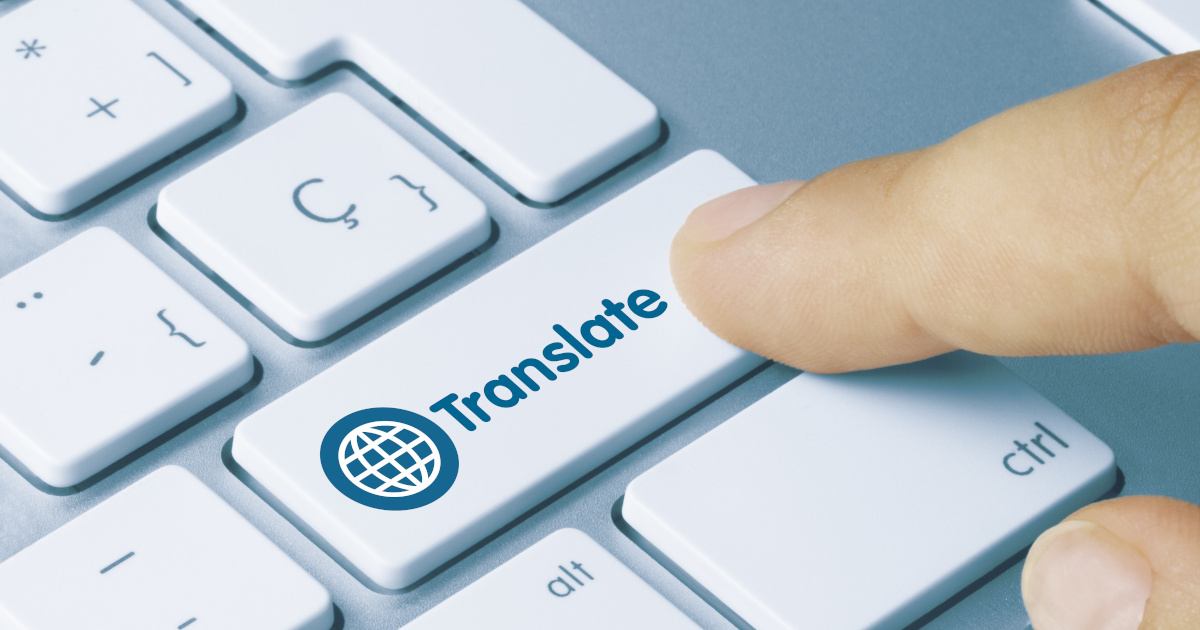21/08/2020
What is MTPE?
By using state-of-the-art and market-ready technologies, translations can now be produced in many languages virtually at the touch of a button, to an acceptable quality and at a lower cost. And if they are integrated correctly, they can even produce professional translations suitable for business use. Machine Translation + Post-Editing (MTPE) is what makes this possible.
The technical foundation: MT
MT stands for Machine Translation. This is the automatic translation of text by software or a learning algorithm based on a neural network. MT is thus a sub-area of artificial intelligence. Its core element is a translation memory, called the MT engine, which has been trained for a language based on reference material and specialised terms.
MT now makes it possible to produce translations in many languages quickly, economically and to an acceptable quality. The main purposes of machine translation are rapidly acquiring information and creating internal multilingual communication, for example tender documents or general technical texts. However, at present, no MT system is capable of producing translations without errors and at the level of human translations.

The essential difference: PE
The PE at the end stands for post-editing. This is when machine-generated pre-translations are checked and edited by trained translators and linguists. This requires a high level of understanding of the functions and objectives of machine translation as well as comprehensive language skills and technical competence.
The post-editors correct, supplement and standardise the MT result and adapt it to the relevant specialised terminology. The aim is to use as much of the raw machine result as possible and, based on this, to create target texts that meet a company’s specific requirements and specifications. So that the cost and time advantages of MT can be fully exploited, the focus is always on economic efficiency.
Professional post-editing is used in official corporate communications, for example to translate specialist texts, technical documentation or product descriptions accurately, completely and consistently, or to formulate marketing messages in a way that is appropriate for the target group.
What advantages does MTPE offer?
Machine translation has now become part of the translation standard, even for specialist subjects. Combined with the post-editor’s expertise and fine-tuning, it offers companies five clear advantages:
1. Time savings, because it can significantly reduce lead times and delivery periods
2. Cost reduction, because translation costs are reduced at the same time
3. High quality, because it achieves a consistently high quality and a natural language result comparable to human translations (human parity)
4. Time-to-market acceleration, because multilingual information products can be distributed much faster
5. Quantity advantage, because larger volumes can also be translated into foreign languages in less time and to the same high quality
To ensure these time, cost and quality advantages, machine translation and post-editing have to be seen as equally fundamental and interdependent factors. Professional MTPE is integrated into a coherent translation process that needs to be continuously optimised to ensure all the benefits mentioned above.
For professional corporate communications, language service providers must apply the same high quality standards to MTPE projects as they do to regular specialised translations. For some time now, a certification of the process to the post-editing standard DIN ISO 18587 has provided visible proof of this. It demonstrates standardised quality processes, comprehensively transparent project procedures, including personal consultation, adjustment of the processes and the highest level of data protection.
When is using MTPE recommended?

In order to achieve the best possible – i.e. appropriate and feasible – translation results, any potential MTPE collaboration should always begin with a consultation with MT experts. This includes performing an initial analysis and taking stock of the situation, but above all it focuses on the customer’s specific expectations and individual goals. From an expert’s point of view and experience, it is advisable to spend more time on the optimal translation process, so that everything can then be done faster and more economically using MTPE. This is something we are very happy to help you with.
Links for further information:
– oneMTPE: Professional machine translations with MTPE
8 good reasons to choose oneword.
Learn more about what we do and what sets us apart from traditional translation agencies.
We explain 8 good reasons and more to choose oneword for a successful partnership.
